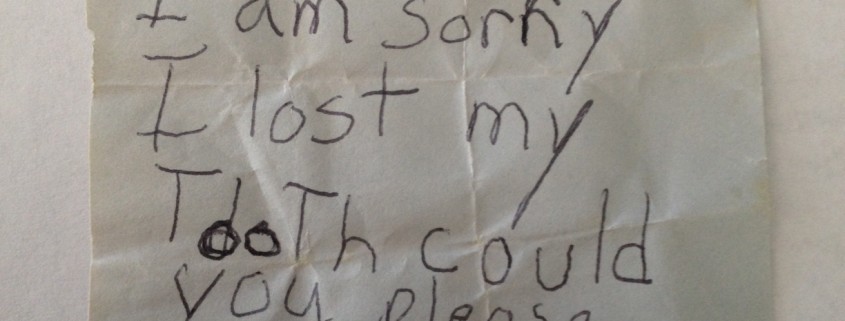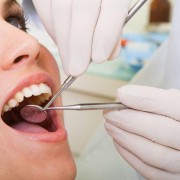Lessons from the Tooth Fairy

How did the Tooth Fairy come to exist?
In the times of witches, it was thought that if a witch got your tooth it could gain control over them. This made disposal of baby teeth a serious matter. The teeth were typically buried, thrown into a fire, or given to a rodent as quickly as possible. As time went on the fear subsided and a variety of customs emerged. In other parts of the world parents would plant the baby tooth in the garden to encourage growth of the adult teeth. Even the mighty Viking warriors made necklaces out of baby teeth believing this would bring them luck in battle.
To most people an image of a white-winged female comes to mind, illustrations of the Tooth Fairy over the years. The tooth fairy in her present common form only came into being in the 20th century. A three act play for children called “The Tooth Fairy” came out in 1927; the first known written work to use that title was printed in 1947. The legend spread during the 1950’s becoming as commonplace as the Easter Bunny in the United States. Coincident with this was an increase in commercialization, with tooth fairy banks, pillows, and so forth appearing in the marketplace.
In early America, money was left as a reward or compensation for the pain of losing a tooth, although it wasn’t until just before the Great Depression in 1927 that a three act play was written using the name of the Tooth Fairy. Not long after, a story written at the end of the Second World War mentioned the Tooth Fairy. However, she didn’t become popular until about the 1950’s along with the Easter Bunny. When the baby boomers were being born, both myths really began to take hold. Some cynics say it has to do with the commercialization of the time period, but we like to think it was just really great timing.
Using The Tooth Fairy as a Teaching Tool
Here at Dr. Chauvin’s office we encourage parents to talk about the Tooth Fairy’s visits as a way to discuss good oral health even before a child loses their first tooth. After all, there’s nothing that makes the Tooth Fairy happier than healthy teeth! You can alway remind them when they do not want to brush or floss that the Tooth Fairy is only looking for healthy baby teeth, not teeth with cavities. This will help get kids excited about taking care of their teeth. Whether it’s their first, second, or tenth tooth we have a couple of good suggestions to assist in the next tooth fairy visit!
- Leave a note reinforcing good habits – A personalized note from the Tooth Fairy could be nearly as exciting for kids as the gift itself. Parents should include tips for important oral health habits that the Tooth Fairy wants kids to practice, such as brushing twice a day, flossing once a day and visiting the dentist twice a year.
- Give oral health gifts – Consider opting out of cash and reinforce good oral health habits by providing a new toothbrush with their favorite cartoon character or fun-flavored toothpaste. How about a new book? There are several children’s books about Tooth Fairy adventures that can add to the Tooth Fairy excitement.
The tooth fairy is a great way to divert attention it’s still important to scheduling regular checkups. Dr. Chauvin and his team will help your children maintain good oral health and catch small issues before they cause serious dental problems.






